Snakes are some of the most fascinating animals in the world and they inhabit a wide variety of habitats — including wetlands. Although true water snakes are only snakes which are members of the Nerodia genus there are still many other semi-aquatic snakes which you can find in and around the water. Of the 29 snakes in Nebraska six of them can be found in the water.
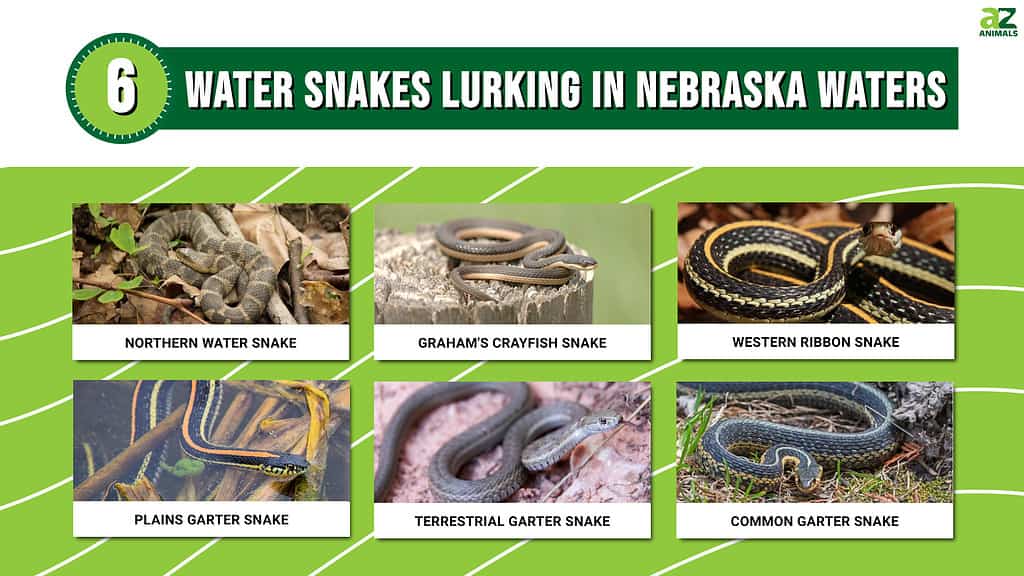
©
So, let’s discover everything you need to know about the water snakes in Nebraska, including where they live, what they look like, and if they are dangerous.
1. Northern Water Snake (Nerodia sipedon)
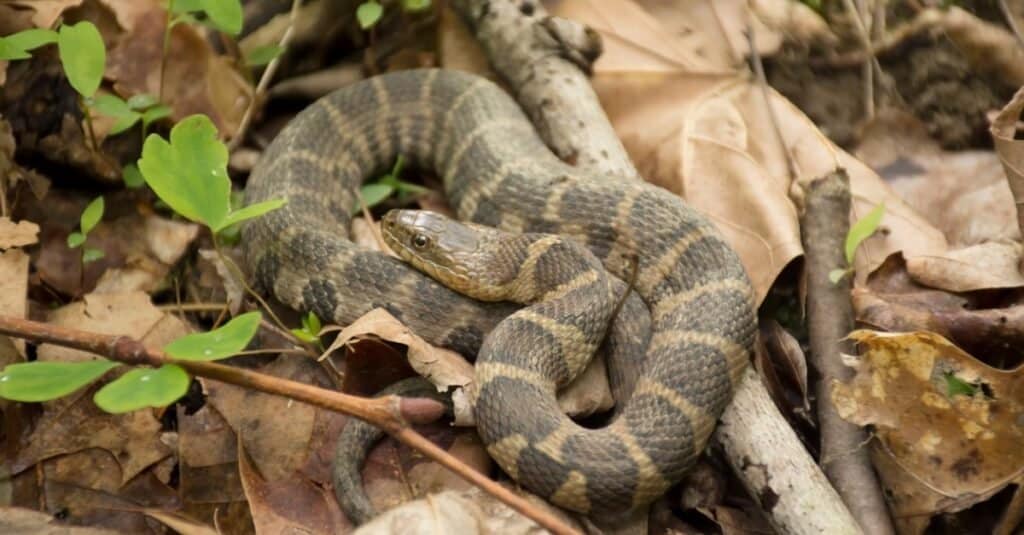
The northern water snake has a flat head that is as wide as its neck.
©iStock.com/IcemanJ
We’ll begin the list with the only true water snake in the state — the northern water snake. Northern water snakes live in the eastern two-thirds on Nebraska, where they live virtually any freshwater habitat. They are large snakes with thick bodies and can reach lengths of approximately five feet. They have dark brown bodies which are overlaid with darker markings. Their markings consist of crossbands in the neck region which transition to blotches further down their body. Northern water snakes typically prey on fish which they seize in their jaws and swallow alive. They have powerful jaws and sharp teeth to help them grasp their prey. Although they are not venomous snakes, they can deliver a nasty bite. Wounds typically bleed a lot due to the anti-coagulant which they possess in their saliva.
2. Graham’s Crayfish Snake (Regina grahamii)
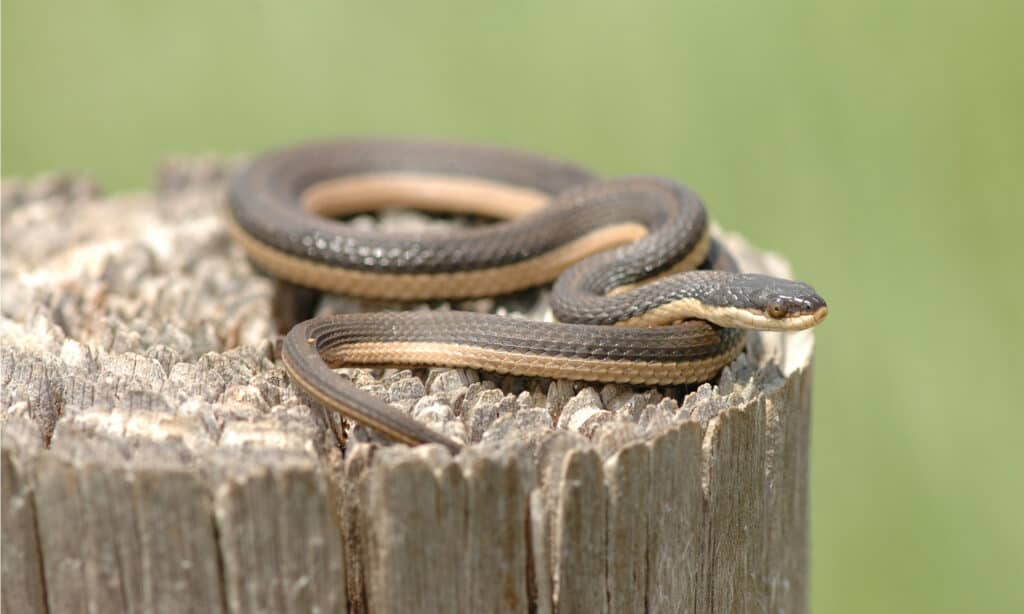
Graham’s crayfish snake is commonly seen around ponds and other slow moving bodies of water.
©Rusty Dodson/Shutterstock.com
The next water snake in Nebraska is Graham’s crayfish snake which inhabits the extreme southeastern region of the state. Graham’s crayfish snakes are 18 to 26 inches long and have grayish brown bodies with keeled dorsal scales and a yellow belly. They typically live in slow-moving bodies of water, such as swamps, oxbow lakes, streams, and ditches. They have a specialized diet and mainly prey on freshly molted crayfish. However, if there are not sufficient crayfish around then they will also prey on frogs and toads. Graham’s crayfish snakes are not aggressive and typically defecate if they are handled instead of biting.
3. Western Ribbon Snake (Thamnophis proximus)
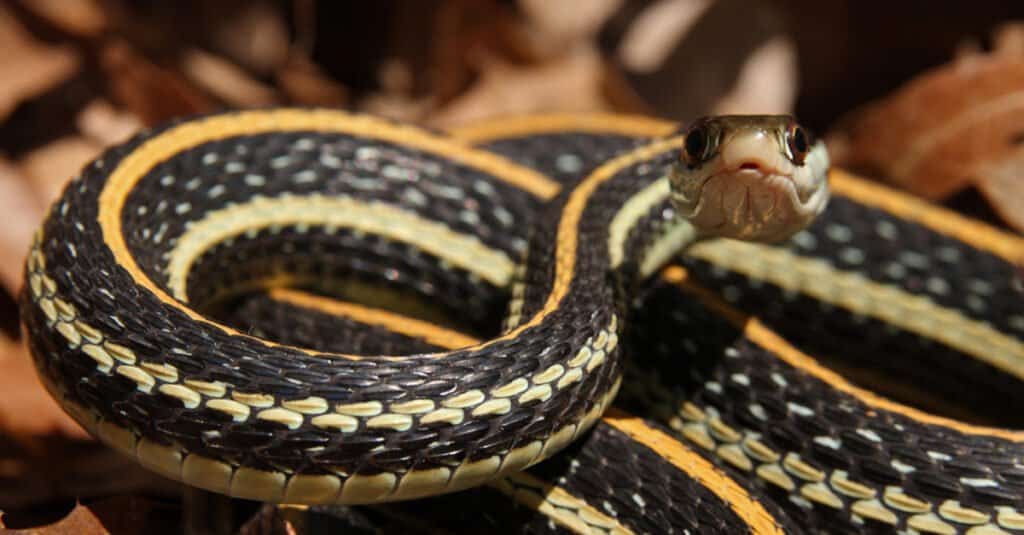
Western ribbon snakes live only in the southeastern corner of Nebraska.
©Ryan M. Bolton/Shutterstock.com
In Nebraska, western ribbon snakes are approximately 20 to 30 inches long and have dark bodies with and orange stripe down the center of their back. They also have a white stripe down each side and a plain, unmarked white belly. Like Graham’s crayfish snakes, western ribbon snakes only occur in the southeastern corner of the state. However, they typically live near to lakes and ponds and in wet meadows and prairies. Western ribbon snakes are primarily diurnal snakes but often become crepuscular during periods of hot weather. They eat a variety of fish and amphibians as well as some small lizards.
4. Plains Garter Snake (Thamnophis radix)
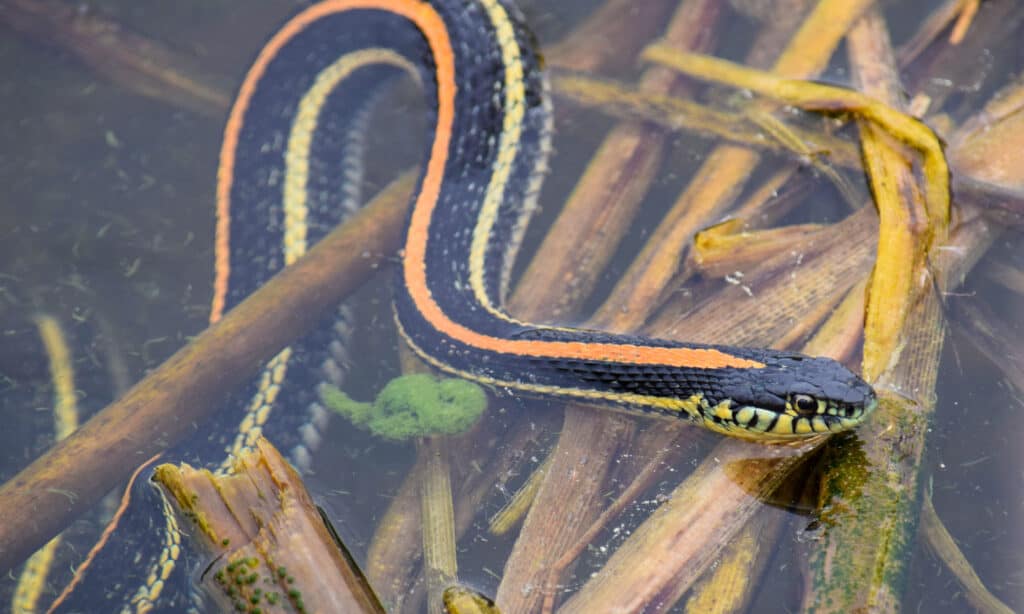
The plains garter snake has a distinctive orange stripe down its back.
©Alyssa Metro/Shutterstock.com
Plains garter snakes are slender snakes which reach 20 to 28 inches long, although the females are usually larger than the males. They are typically greenish-brown with three orange or yellow stripes which run right from their head to the tip of their tail. They have one stripe down the center of their back and one on either side of their body on scale rows three and four. Most plains garter snakes also have black lips and yellow spots on their head. Plains garter snakes live right across the state of Nebraska and inhabit wetland areas around ponds, streams, and lakes. They prey on a variety of fish, amphibians, slugs, and earthworms.
5. Terrestrial Garter Snake (Thamnophis elegans)
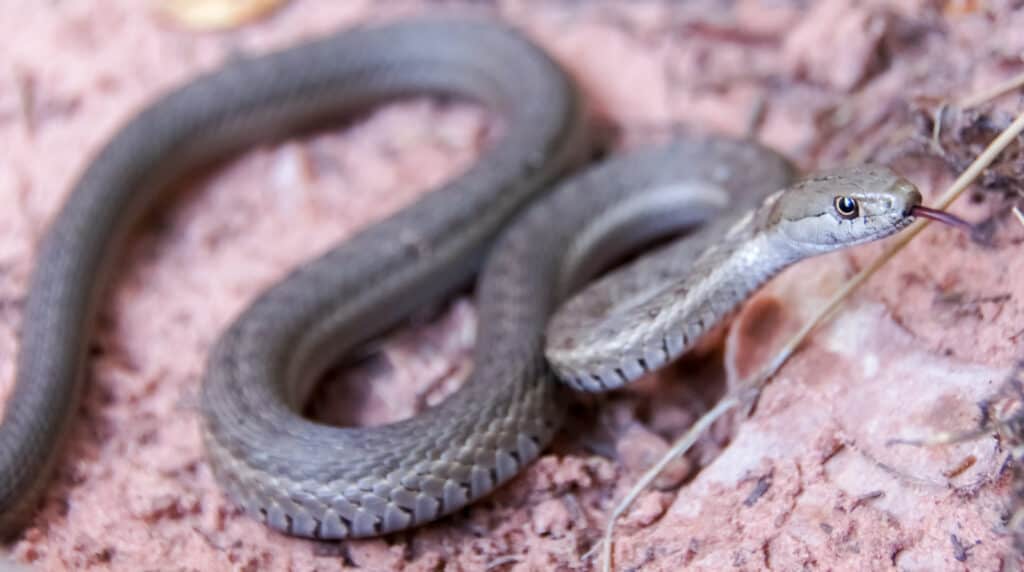
Terrestrial garter snakes are mildly venomous to their prey.
©iStock.com/yhelfman
The terrestrial garter snake is the next water snake in Nebraska and is approximately 20 to 30 inches long. Terrestrial garter snakes are usually gray or brown with three orange, yellow, or white stripes — one down their back and one on either side. Many of these snakes also have either black or red spots between the stripes. Terrestrial garter snakes occur only in Sioux County and live in wet meadows and areas close to streams. They are mildly venomous to their prey which consists of fish, frogs, toads, salamanders, lizards, worms, and some small mammals.
6. Common Garter Snake (Thamnophis sirtalis)
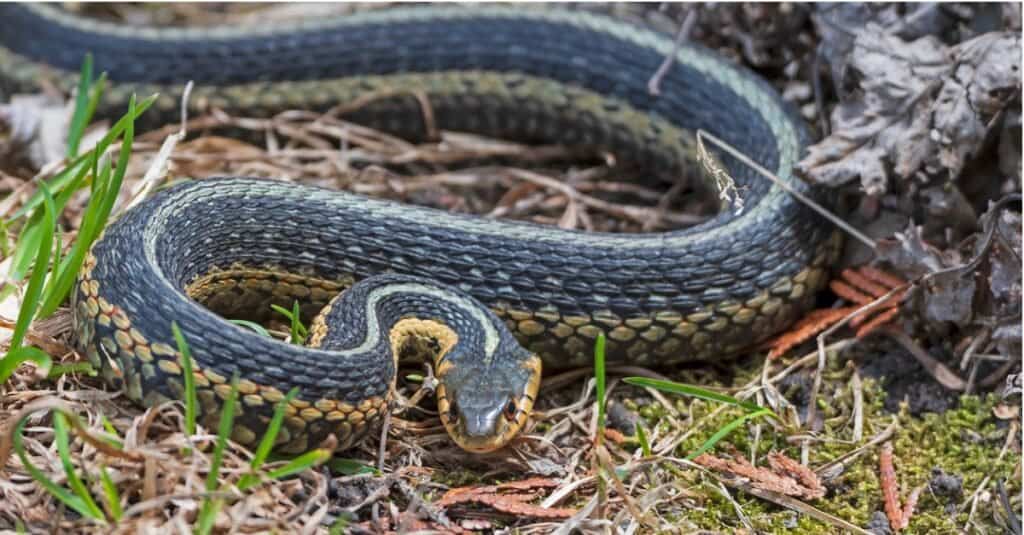
Common garter snakes rarely stray far from water.
©iStock.com/Wildnerdpix
The final snake is the common garter snake which varies widely in appearance. However, most common garter snakes are black or brown with light-colored stripes and a yellow or white belly. Common garter snakes can be found statewide and rarely stray far from water. Favored habitats include stream sides, river banks, and wet meadows. Like the terrestrial garter snake, they are slightly venomous to their prey, although neither are dangerous to humans. Common garter snakes prey on a variety of fish, amphibians, slugs, snails, and lizards. Predators of these snakes include snapping turtles, large fish, birds of prey, and larger snakes.
Summary of 6 Water Snakes Lurking in Nebraska Waters
| Common Name | Scientific Name | Length in Inches | Habitat |
|---|---|---|---|
| Northern Water Snake | Nerodia sipedon | 18-27+ | Any freshwater habitat |
| Graham’s Crayfish Snake | Regina grahamii | 20-30 | Wet meadows and prairies, swamps, oxbow lakes, streams, ditches |
| Western Ribbon Snake | Thamnophis proximus | 20-28 | Near lakes and ponds |
| Plains Garter Snake | Thamnophis radix | 20-30 | Wetlands, ponds, streams, lakes |
| Terrestrial Garter Snake | Thamnophis elegans | 18-26 | Close to streams, wet meadows |
| Common Garter Snake | Thamnophis sirtalis | 24-54 | Stream edges, river beds, wet meadows |
The photo featured at the top of this post is © Jason Patrick Ross/Shutterstock.com
Discover the "Monster" Snake 5X Bigger than an Anaconda
Every day A-Z Animals sends out some of the most incredible facts in the world from our free newsletter. Want to discover the 10 most beautiful snakes in the world, a "snake island" where you're never more than 3 feet from danger, or a "monster" snake 5X larger than an anaconda? Then sign up right now and you'll start receiving our daily newsletter absolutely free.
Thank you for reading! Have some feedback for us? Contact the AZ Animals editorial team.







